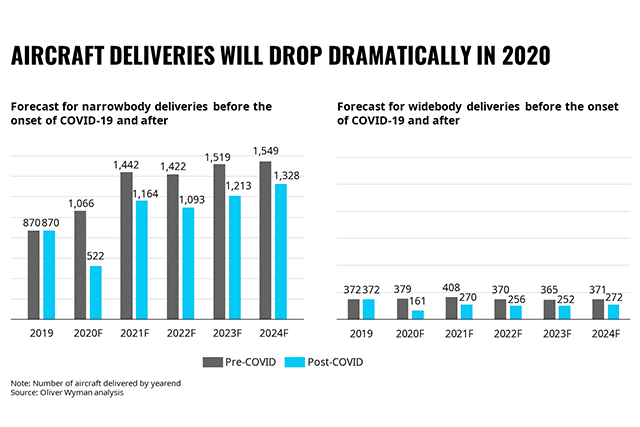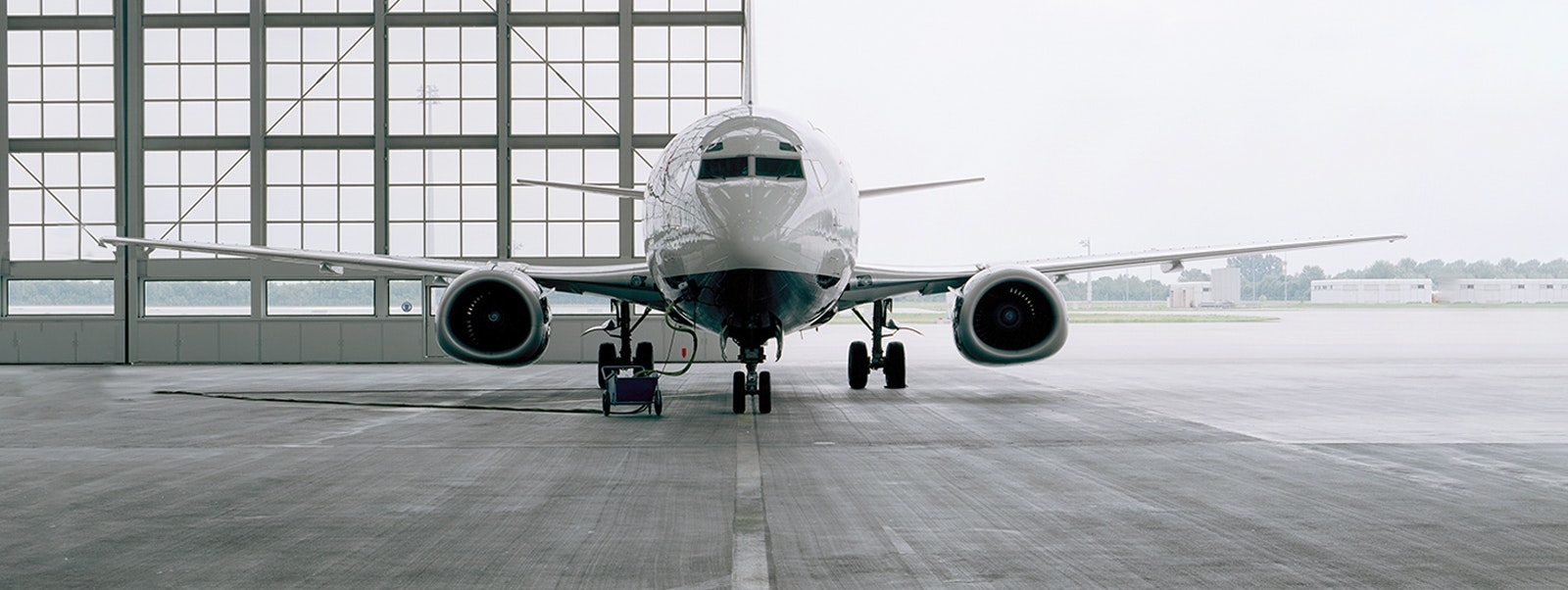By Jerome Bouchard and Ken Aso
This article first appeared in Forbes on May 20, 2020.
It’s hard to remember that only four months ago, the aerospace industry was churning out aircraft at unprecedented rates, and airlines were worried that the temporary grounding of the 737 MAX might interfere with what looked like a year of nothing but historic highs.
Back then, there were fears that there would not be enough pilots or mechanics to handle what seemed insatiable air travel demand.
Today, in the wake of a worldwide pandemic that has already killed a quarter of a million people and shut down much of the world’s economic activity, more than 70 percent of the global aviation fleet is grounded. Of the 27,500 aircraft in service at the beginning of 2020, less than 7,500 are still flying. And the fleet is unlikely to top 27,000 again until the end of 2022 at the earliest.

Aerospace faces an inventory pile-up of unwanted aircraft ordered in the heyday that may take up to five years to work through. COVID-19 burst the bubble that was fueled by air traffic, global economic growth, and business and leisure trends, triggering massive cutbacks in capacity, layoffs, and order cancellations all along the supply chain. The contraction’s force, depth, and duration make it an unprecedented calamity that will force the industry to consolidate and emerge on the other side more efficient and integrated, but with far fewer players.
To read the full article, click here.




